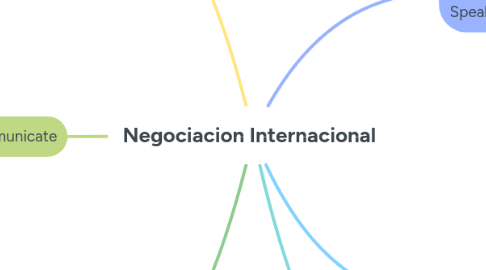Negociacion Internacional
by JOSELINE LILIANA CUEVA CASTILLO

1. Levels of directness influence many aspects of international negotiations
1.1. Do not force disagreement
1.2. Reject tactfully
1.3. Be sensitive
1.4. Refrain from making assumptions
1.5. Do not worry too much about the clarity of your message
1.6. Avoid Confrontation
2. Using Tecnology to Communicate
2.1. It should be obvious that using technology wheb communicating across cultures is intrinsically less efficient than speaking with a person face to face.
2.2. Media such as e-mail, web conferencing, and various kinds of online collaboration tols come with significant shortcomings.
3. Making it Wok
3.1. Communicating across cultures has been described as a minefield of practices, prferences, rules, ando taboos that can be very difficult to cross.
3.2. Here are a few points to keep in mind for your next international negotiation: - Study the rules - Recognize communication preferences as cultural preferences - Realize that common language can be deceiving - Keep an open mind.
4. Interacting with Non-native Speakers
4.1. Listen attentively: Following the line of thought of a person speaking in a language that is foreign to the speaker can be hard.
4.2. Verify mutual understanding: Because misunderstanding are frequent, giving and seeking feedback are very important in non-native language communication.
4.3. Use simple languages, speaks clearly, and slow down: Choosing simple words, pronouncing them clearly, and slowing the speed.
4.4. Pause frecuently: Translating takes time.
5. Non-Verbal Massages
5.1. Non-Verbal communication can get even more complicated if gestures or behaviors take on different meanings across cultures. Keeping a passion for action, might be taken as a hug insult in Russia or Ukraine.
6. Directness
6.1. Direct Communication
6.2. Indirect Communication


